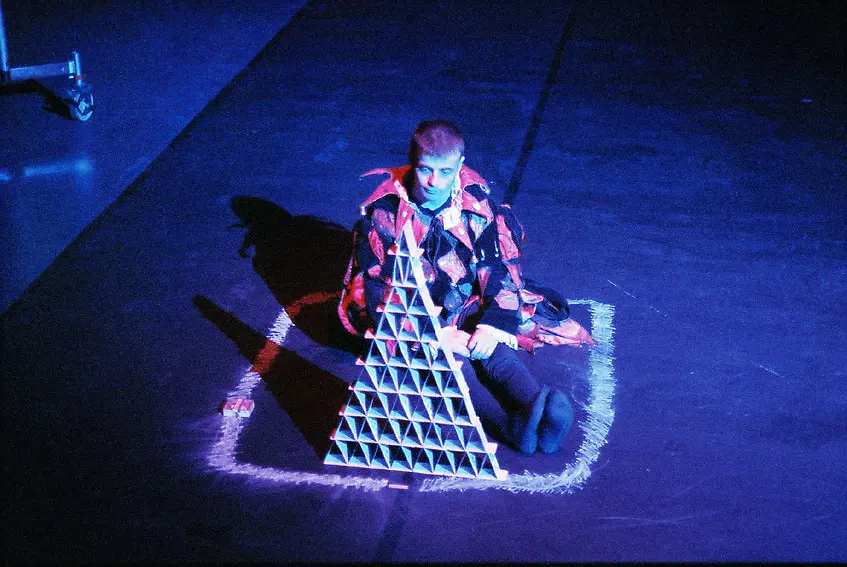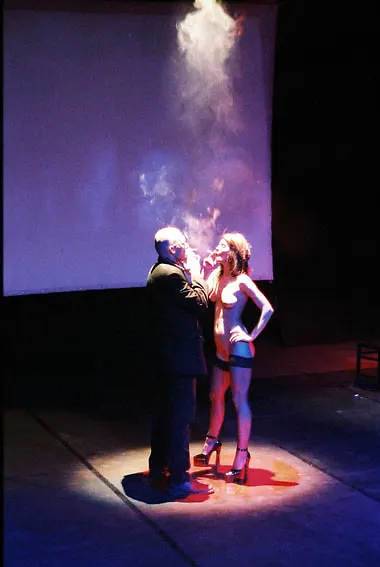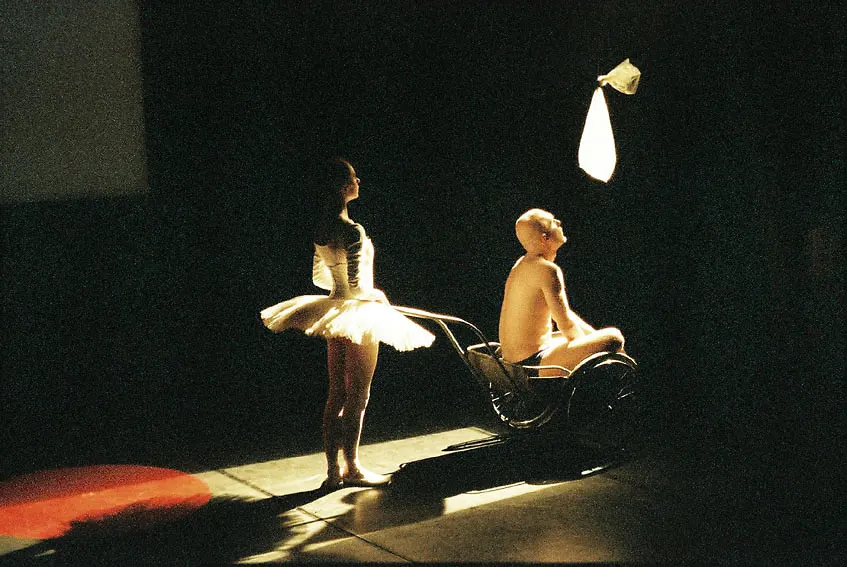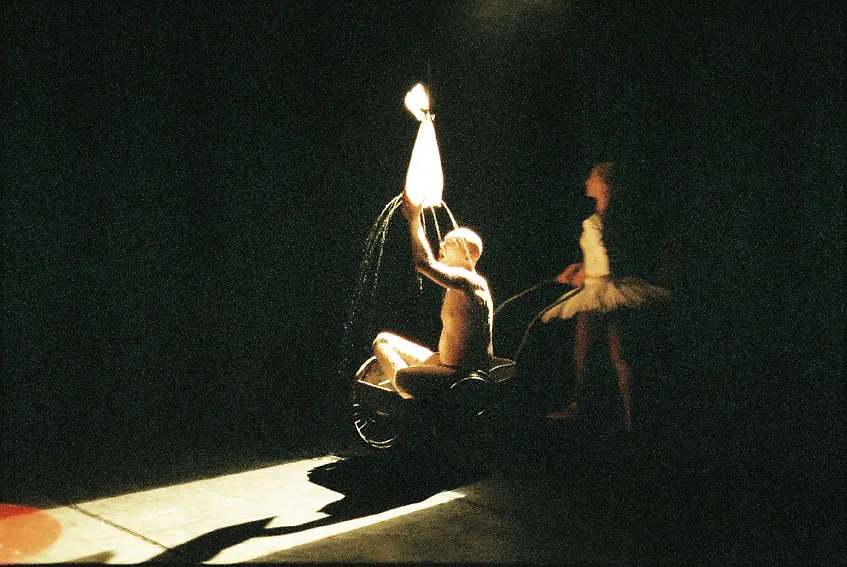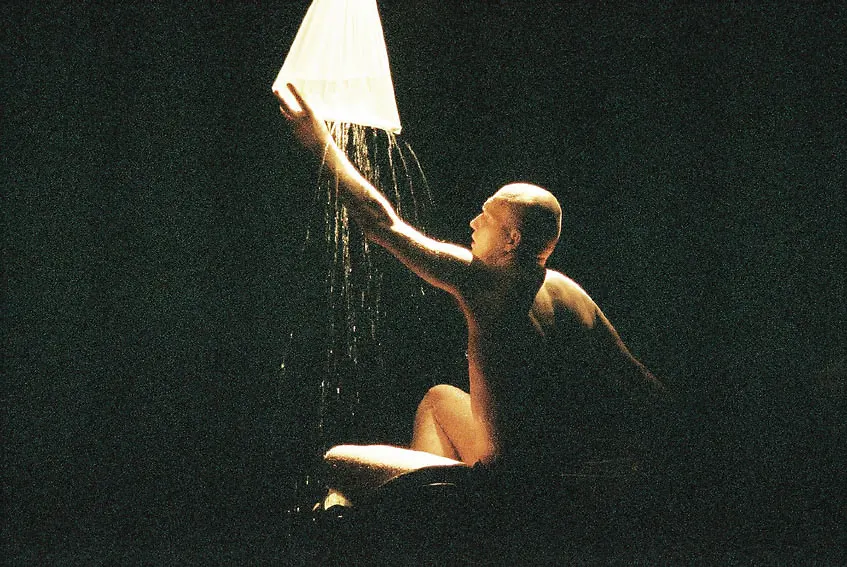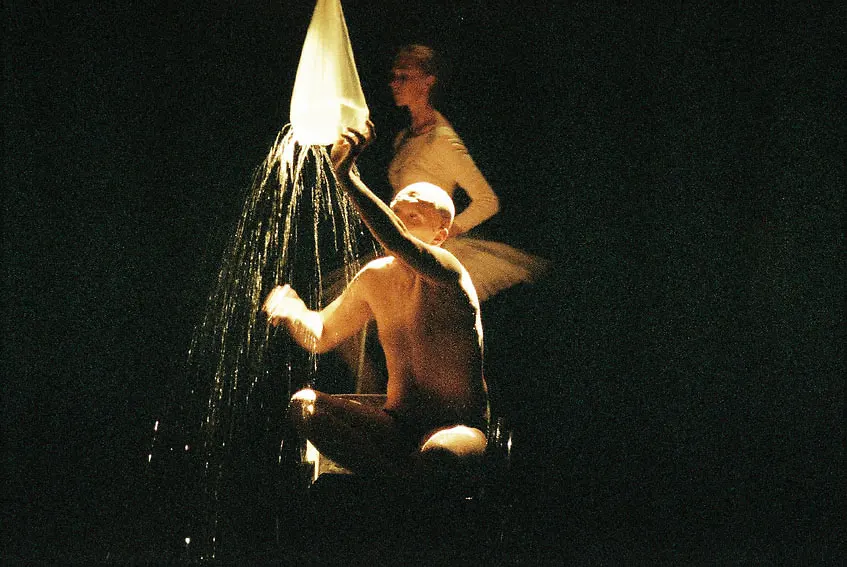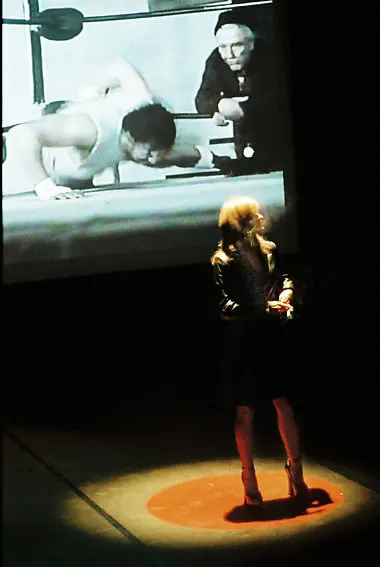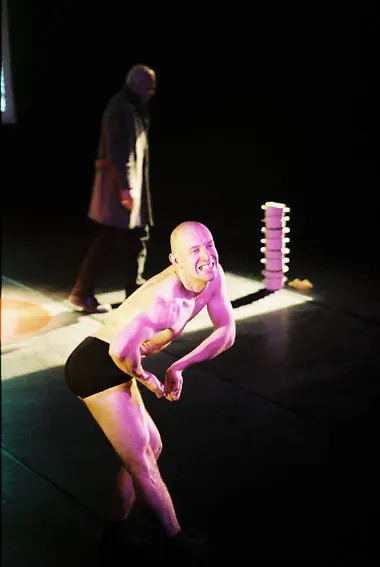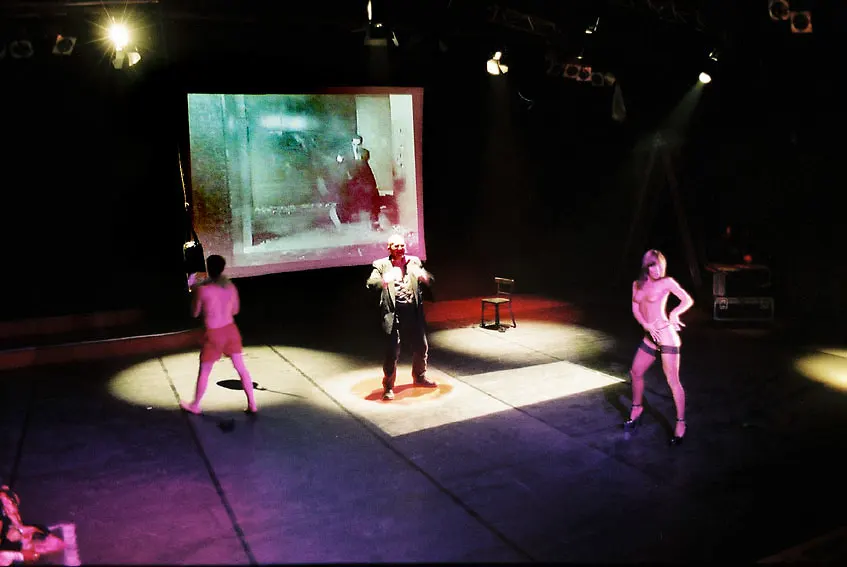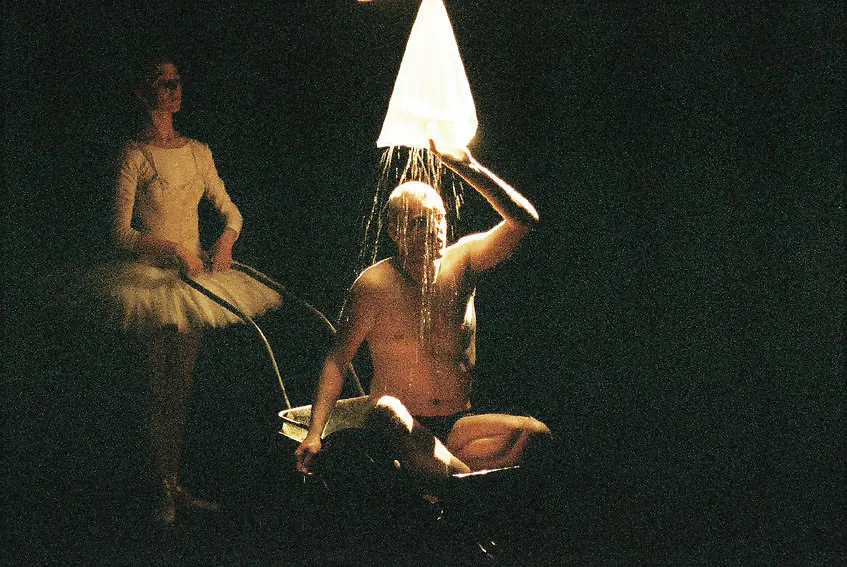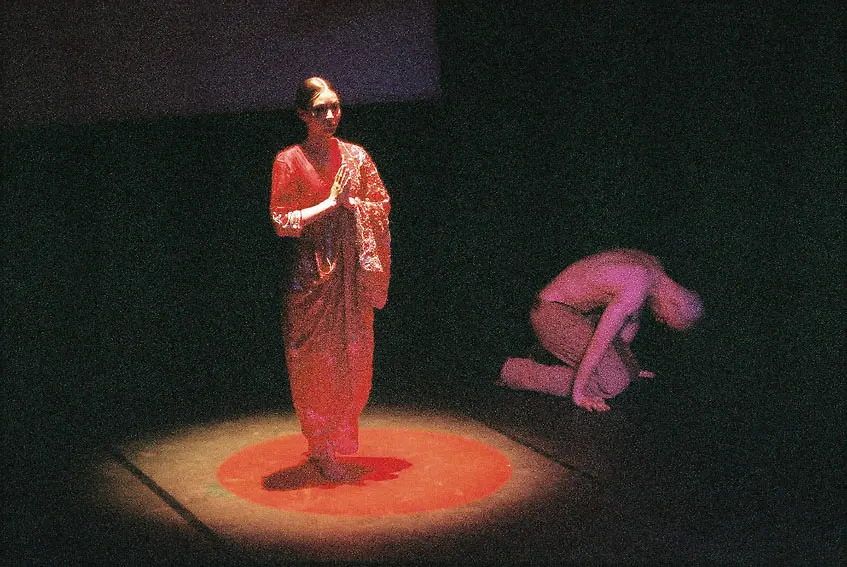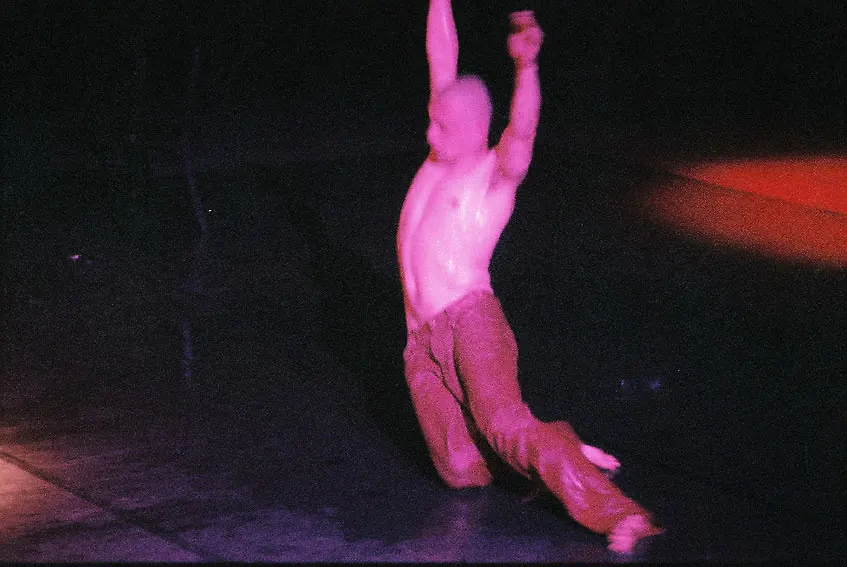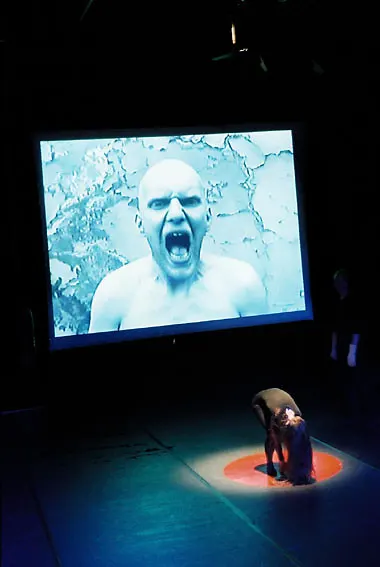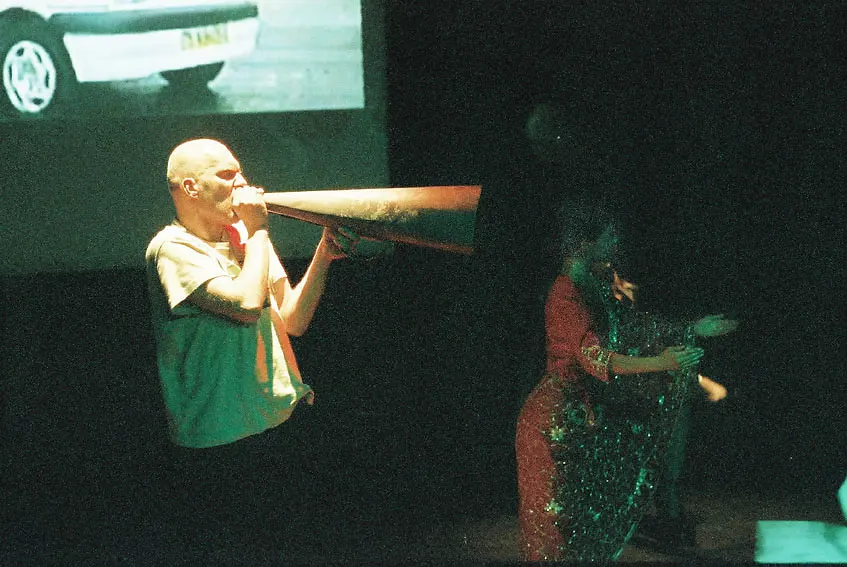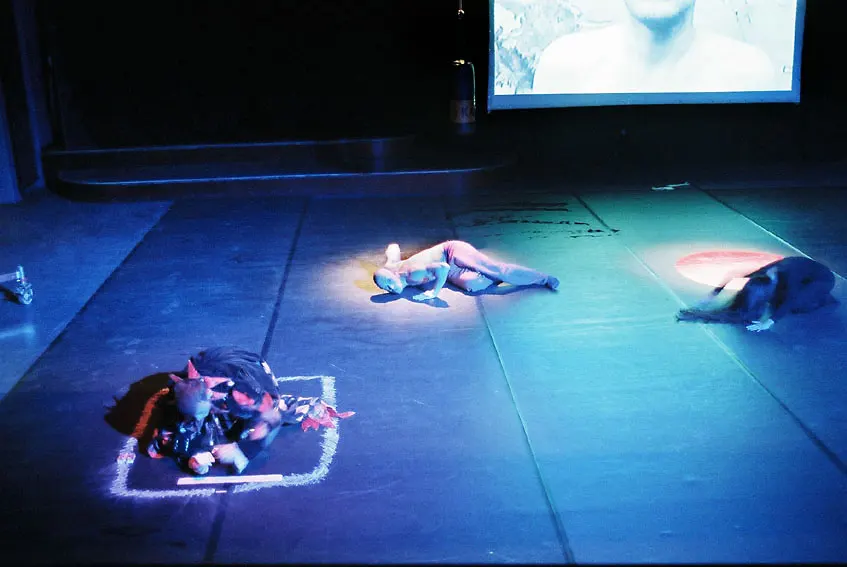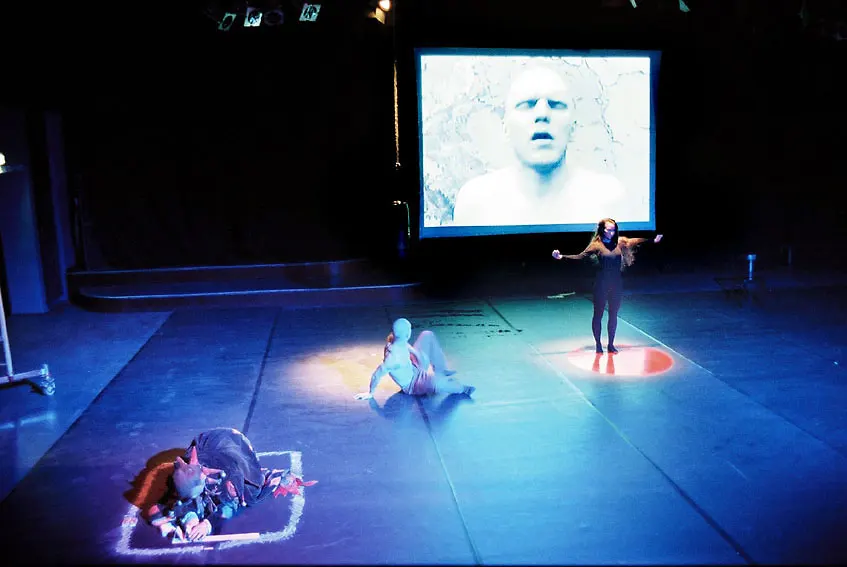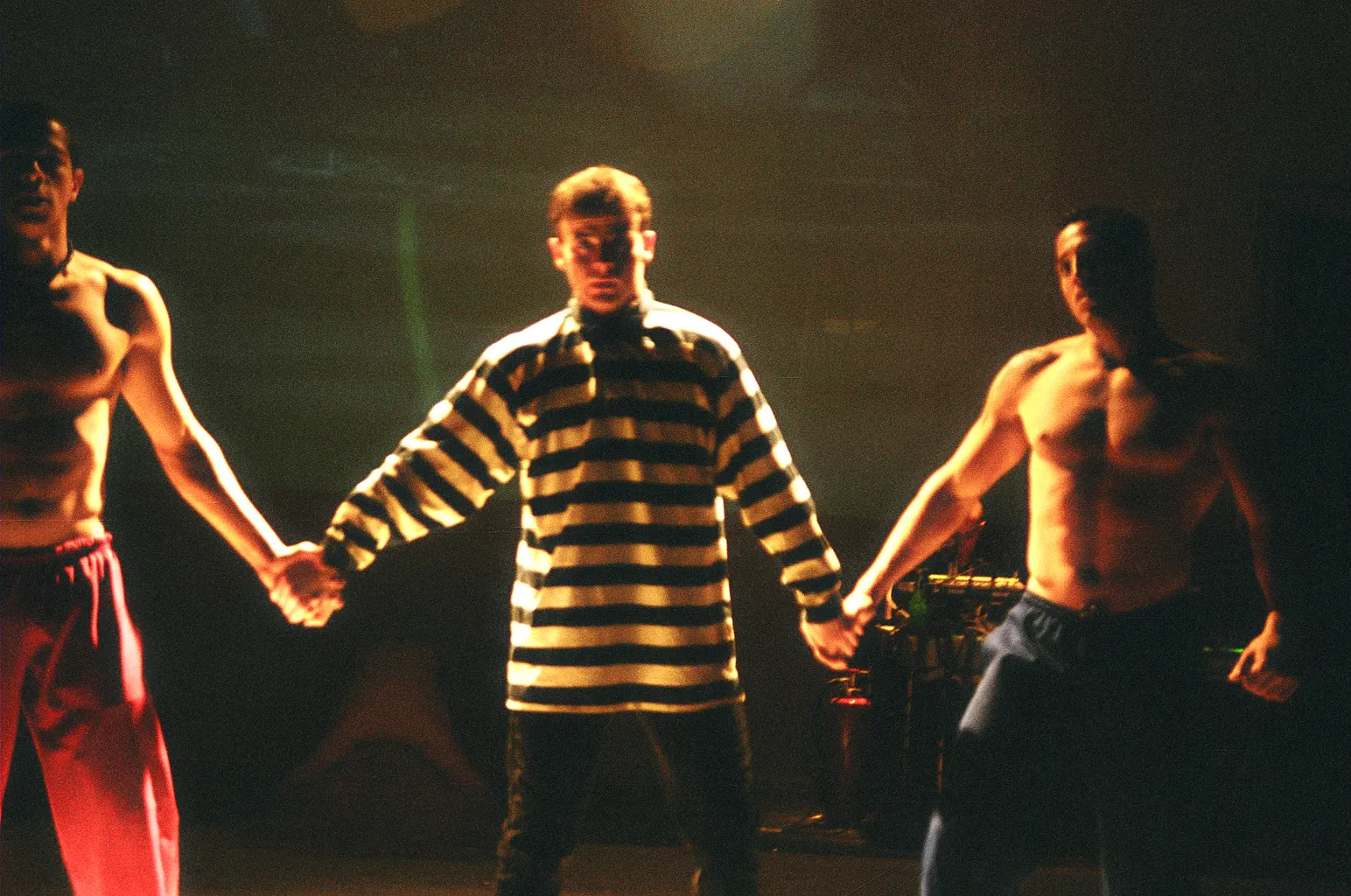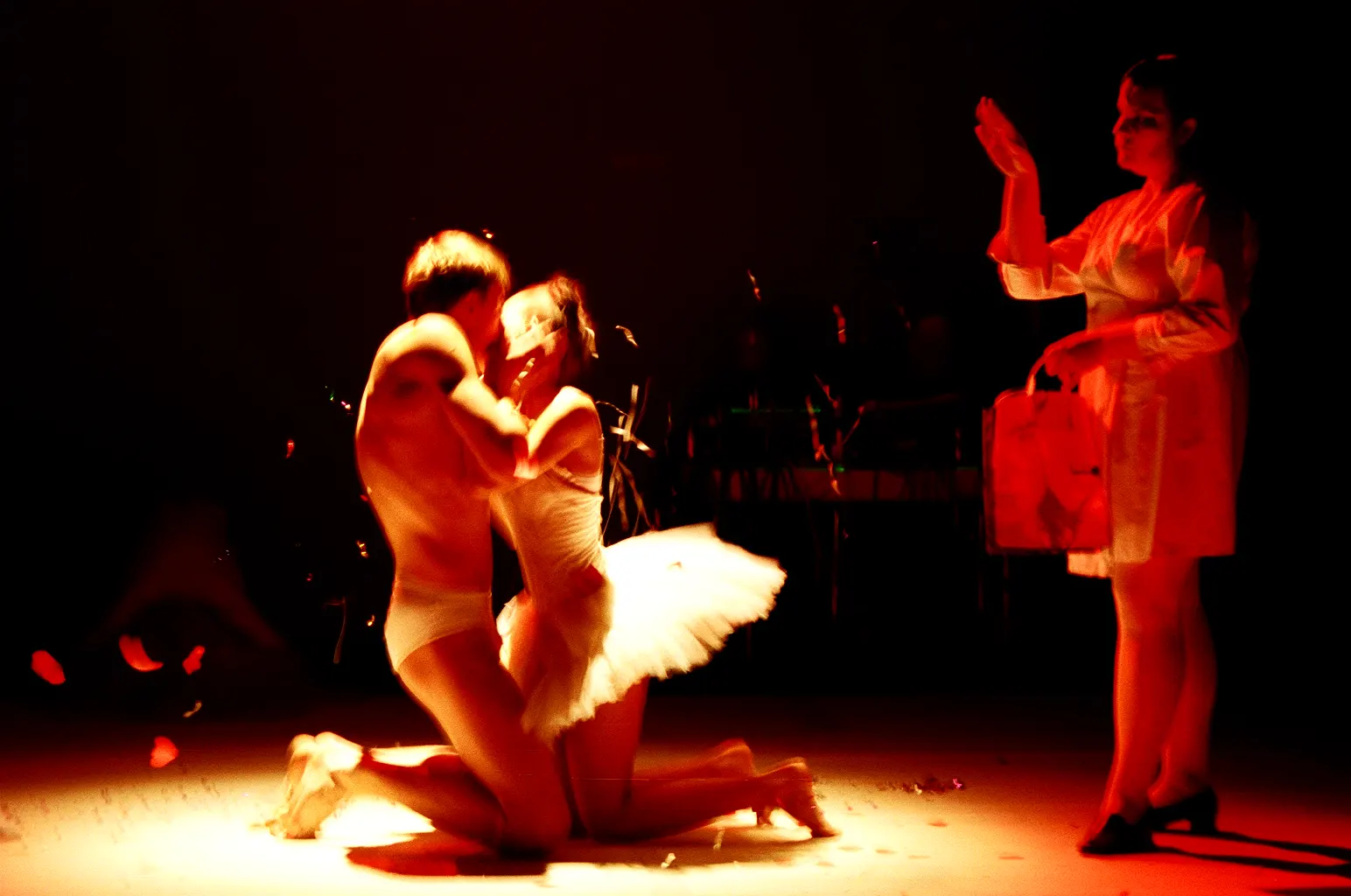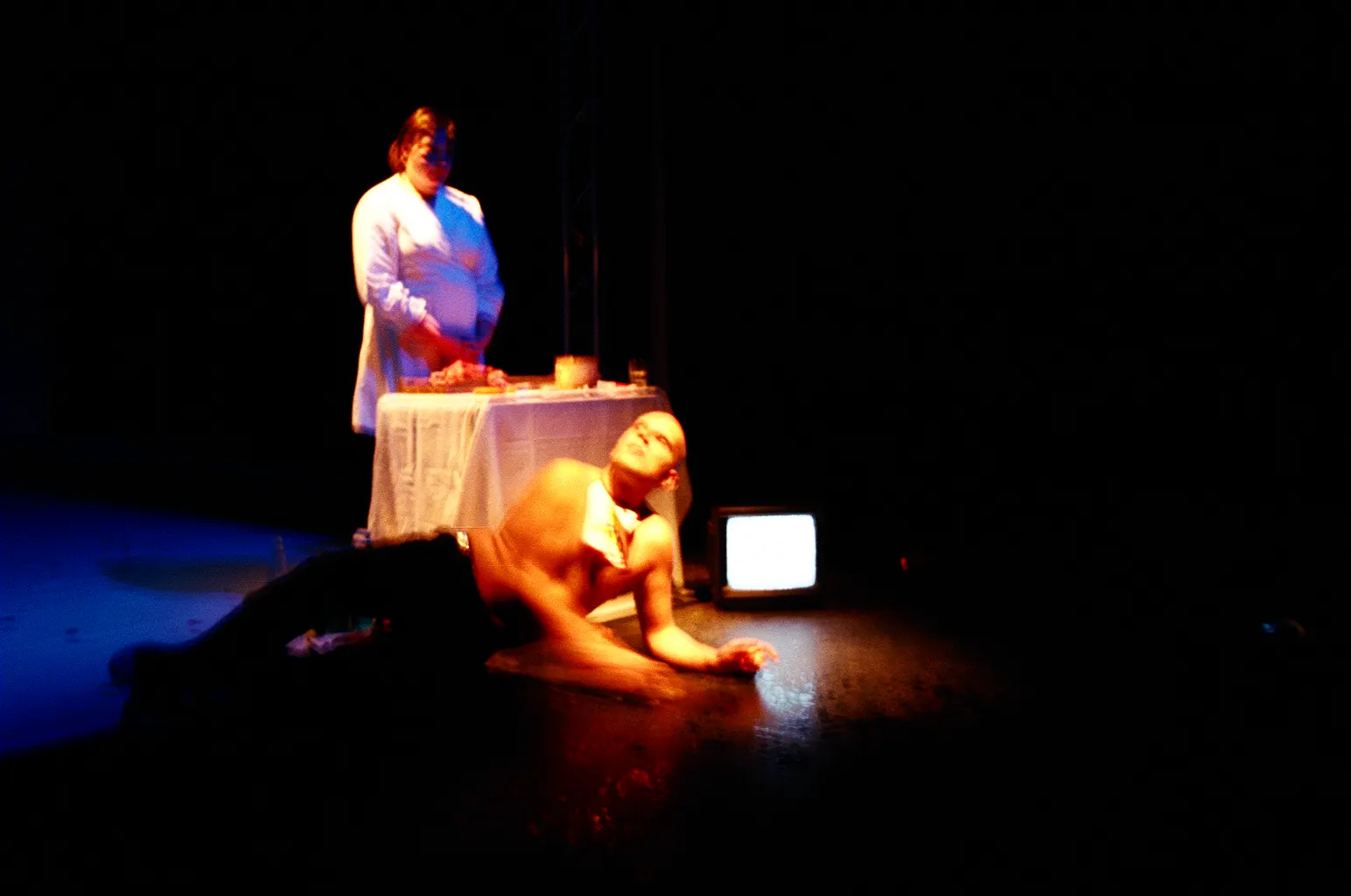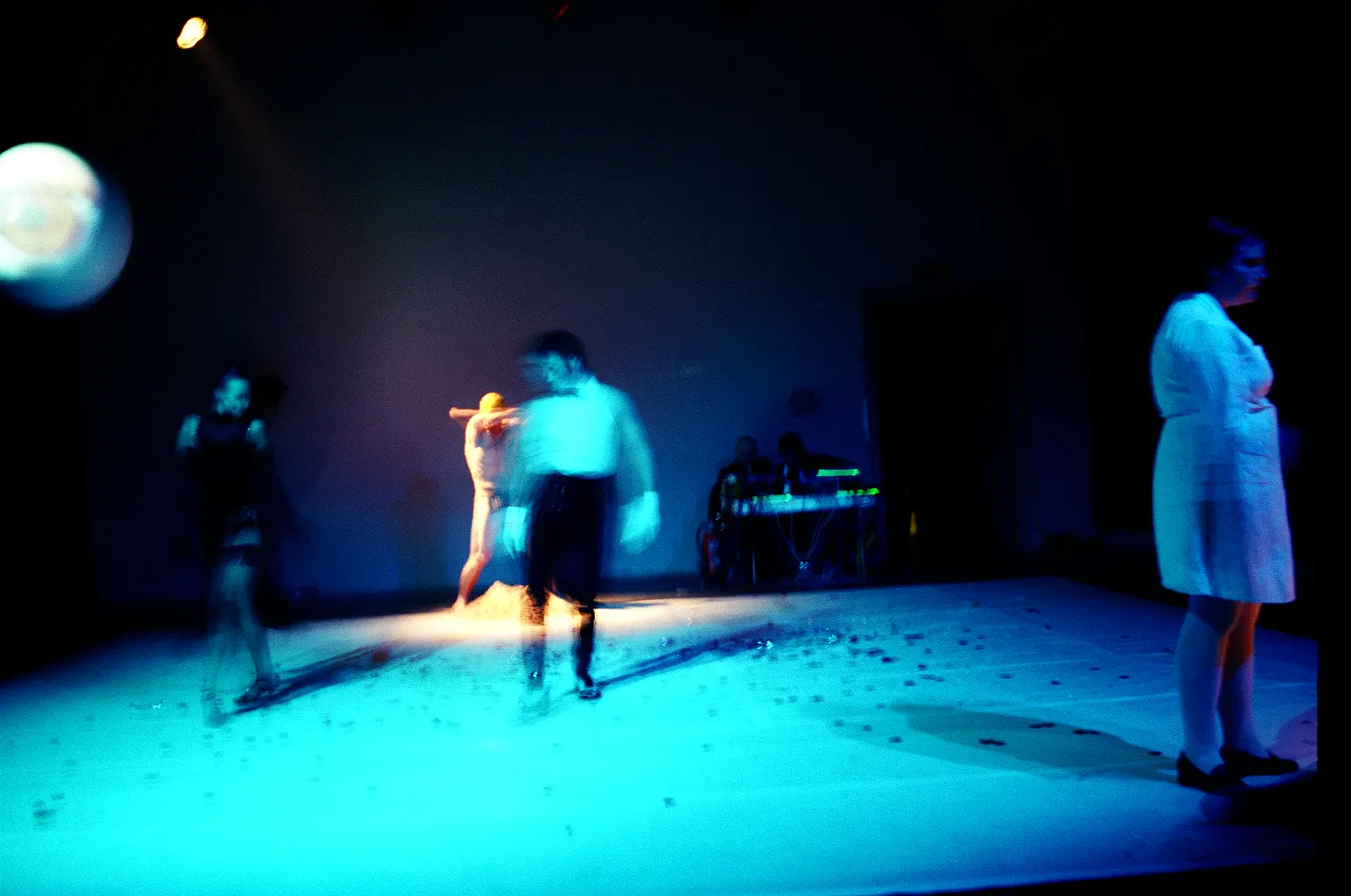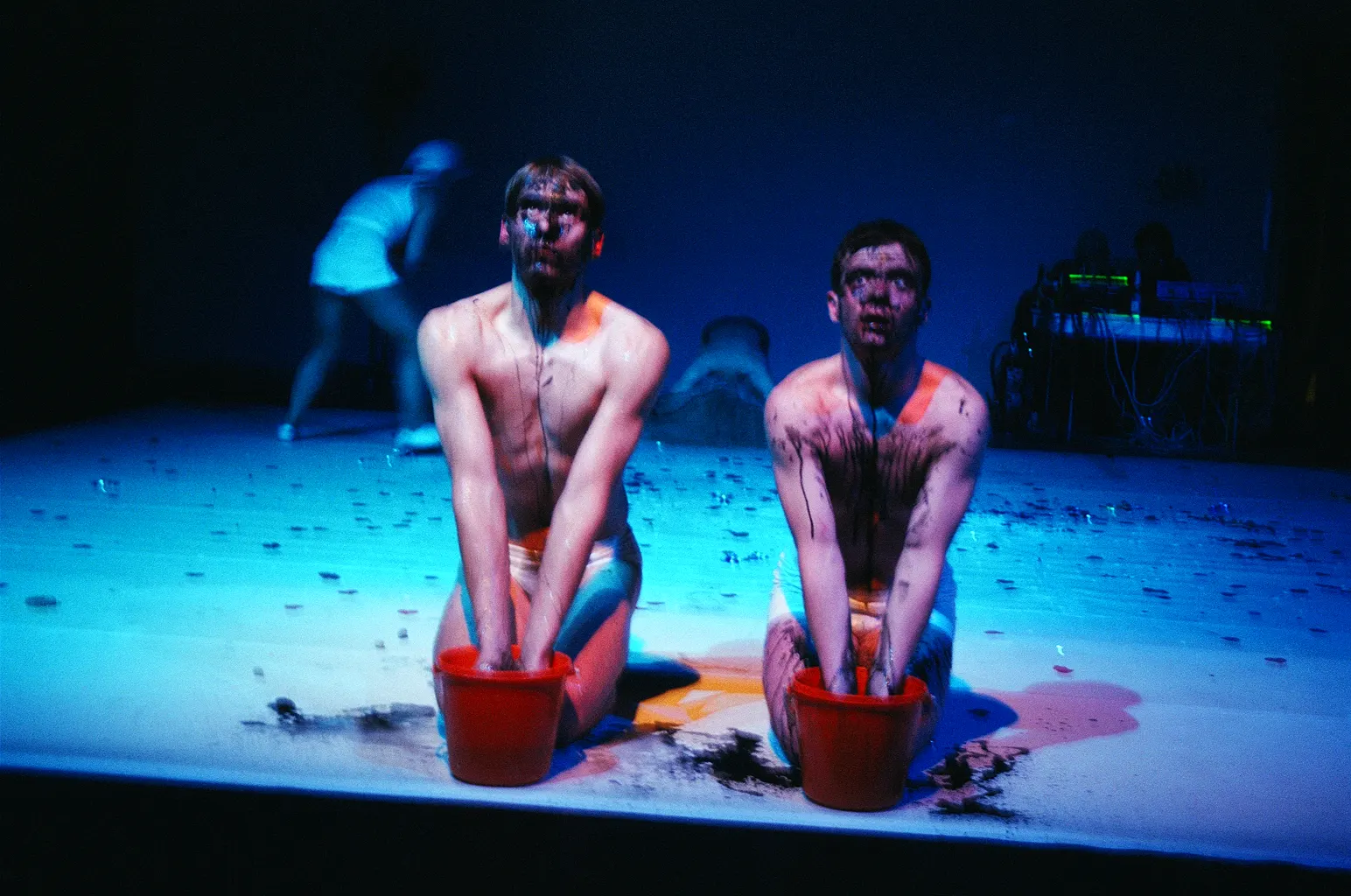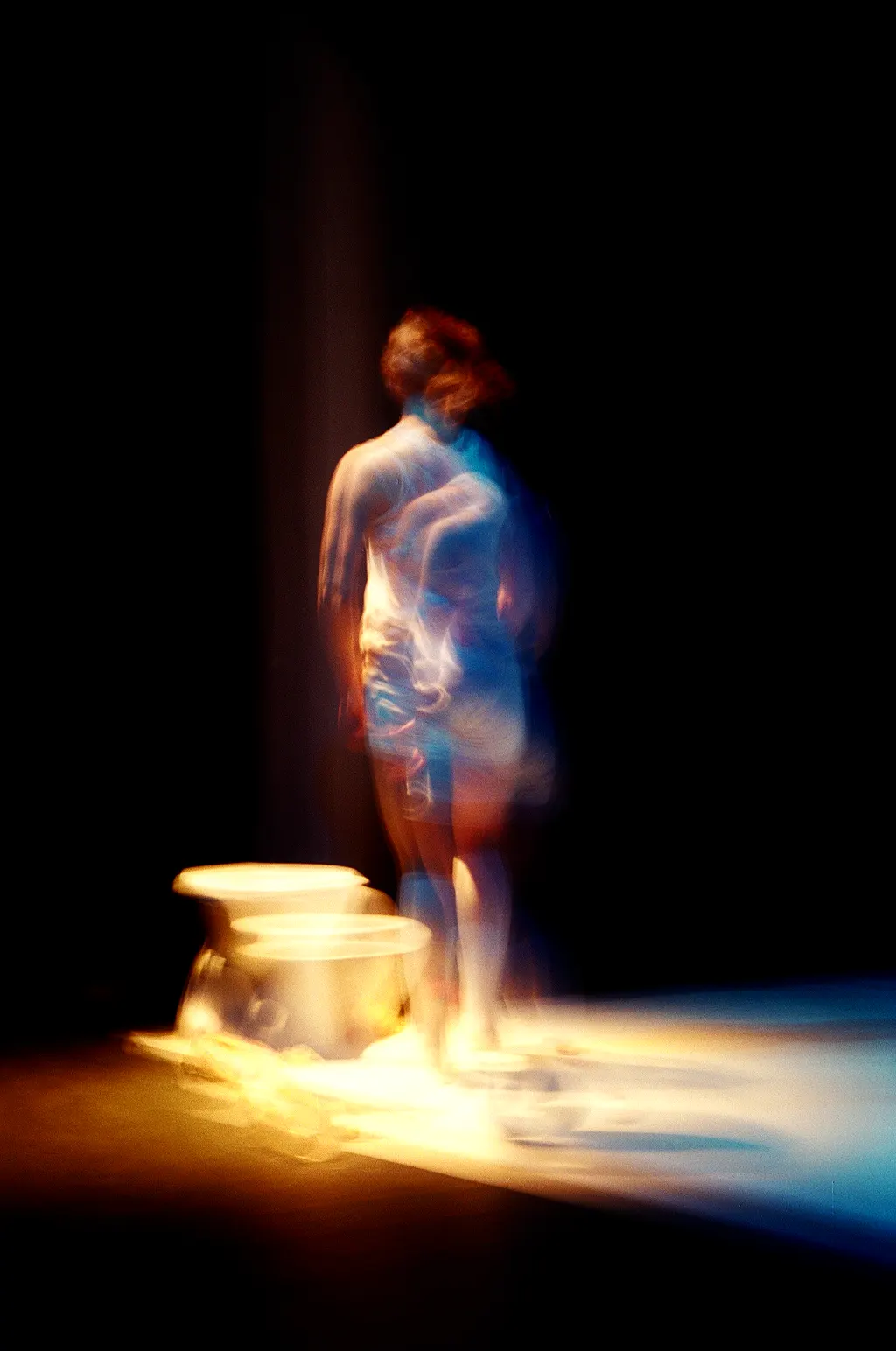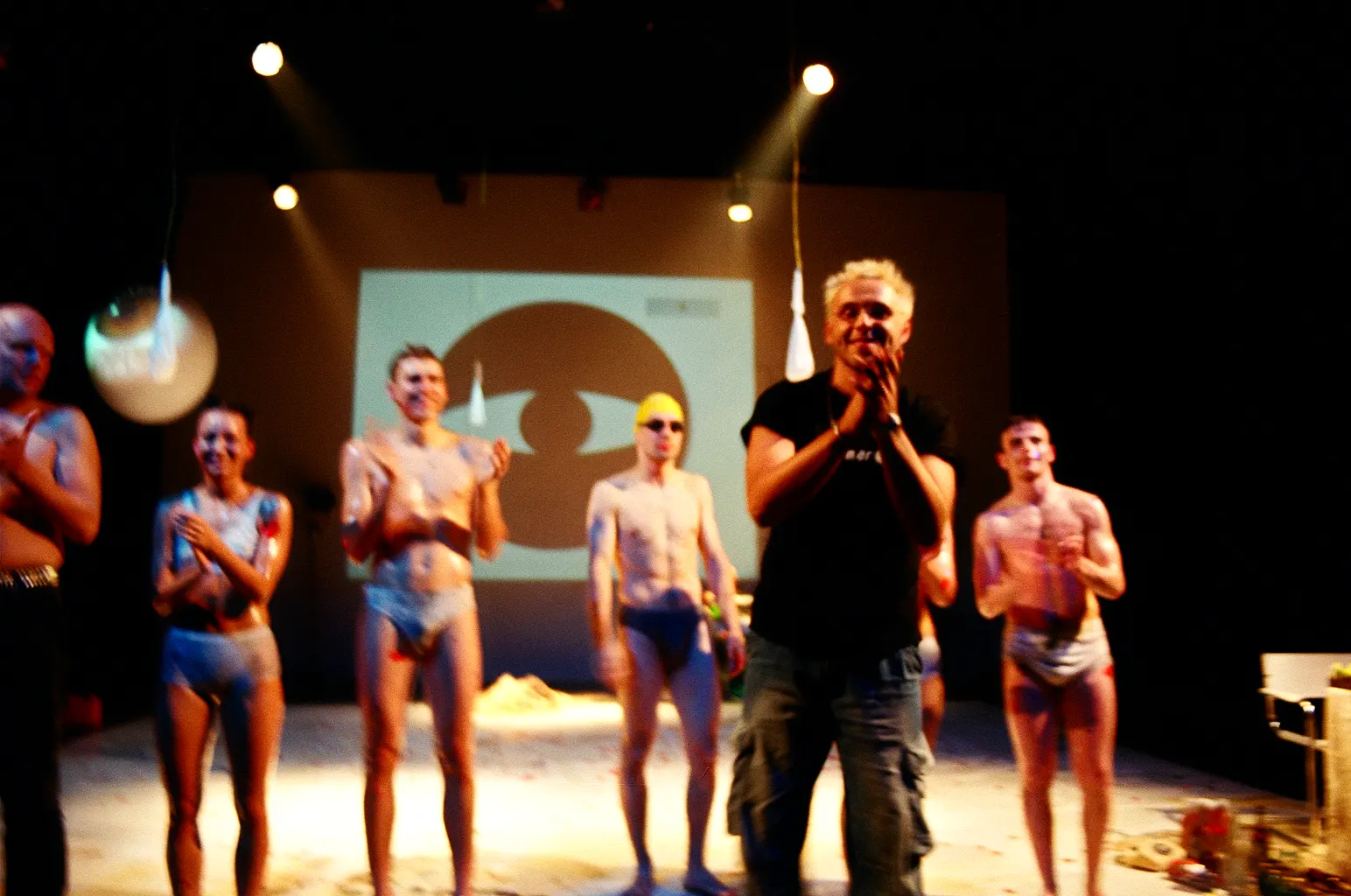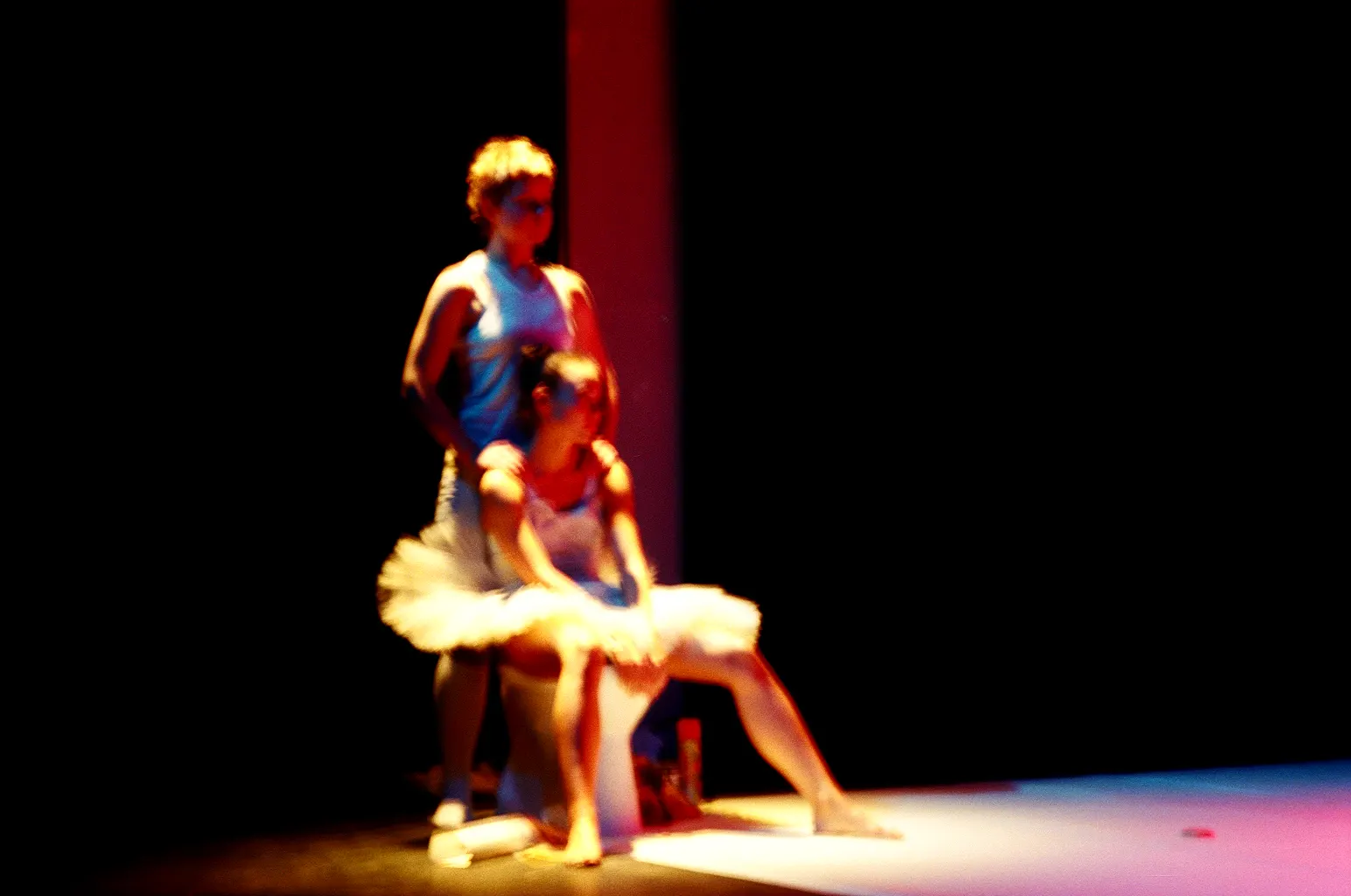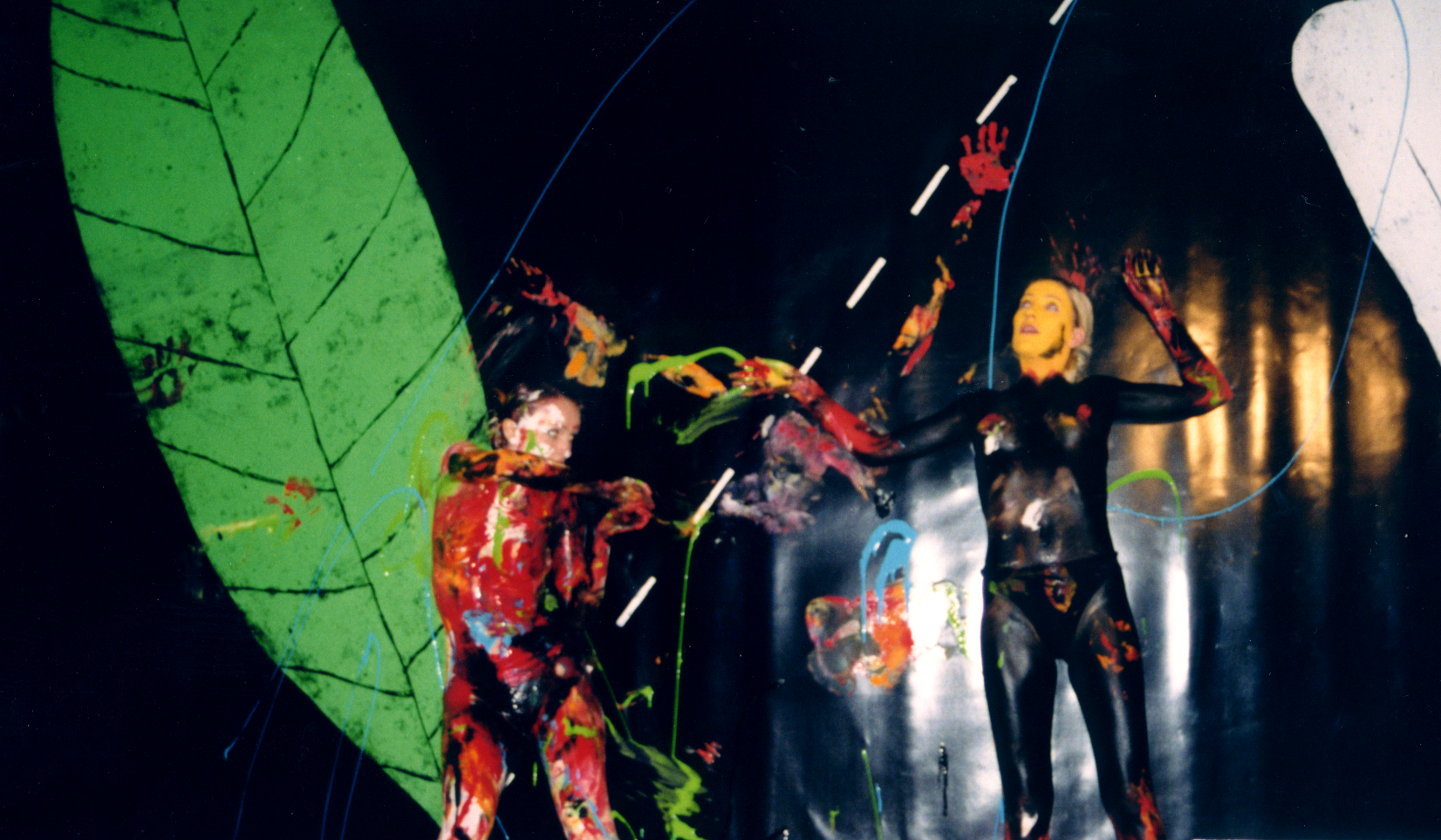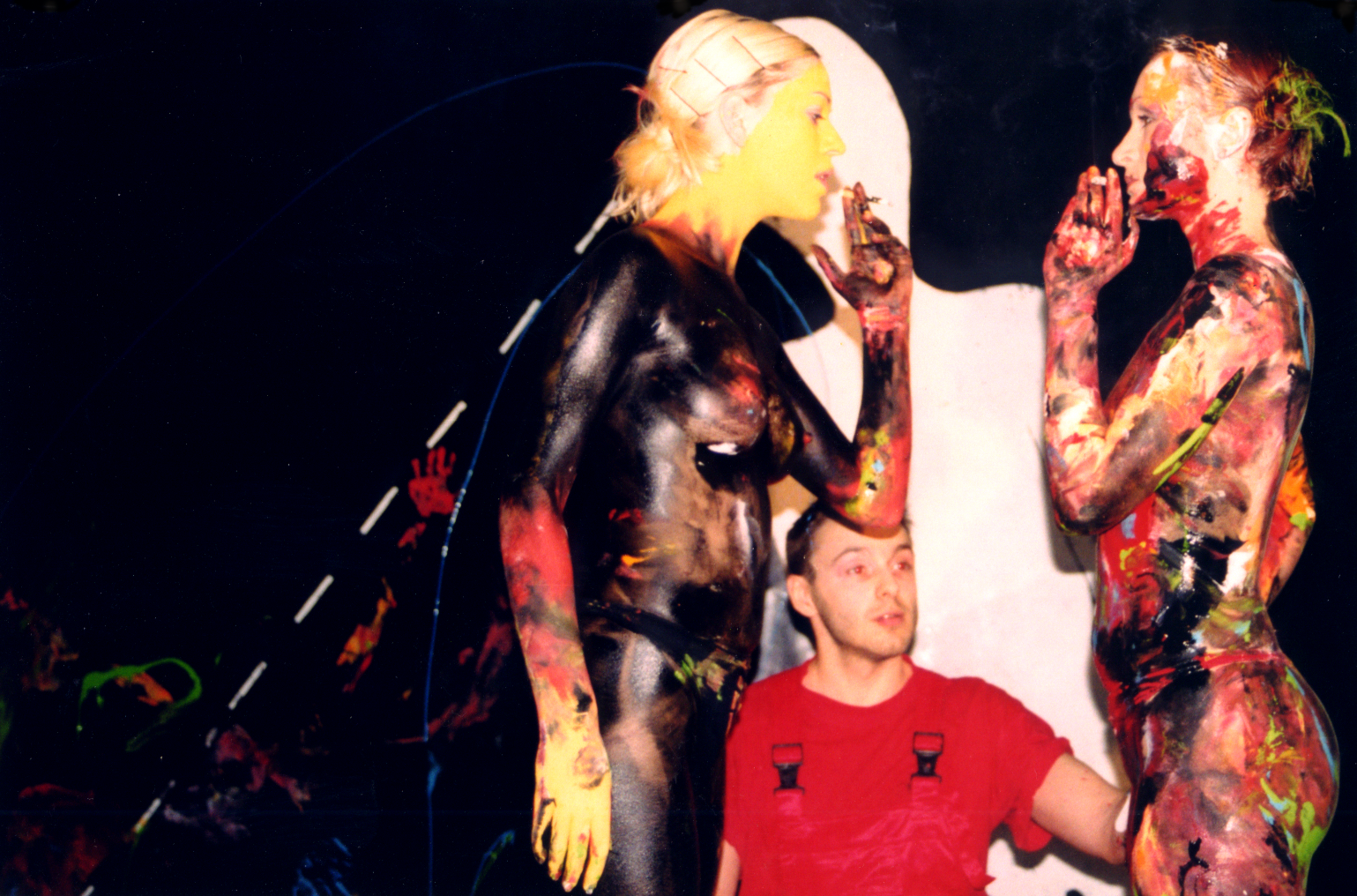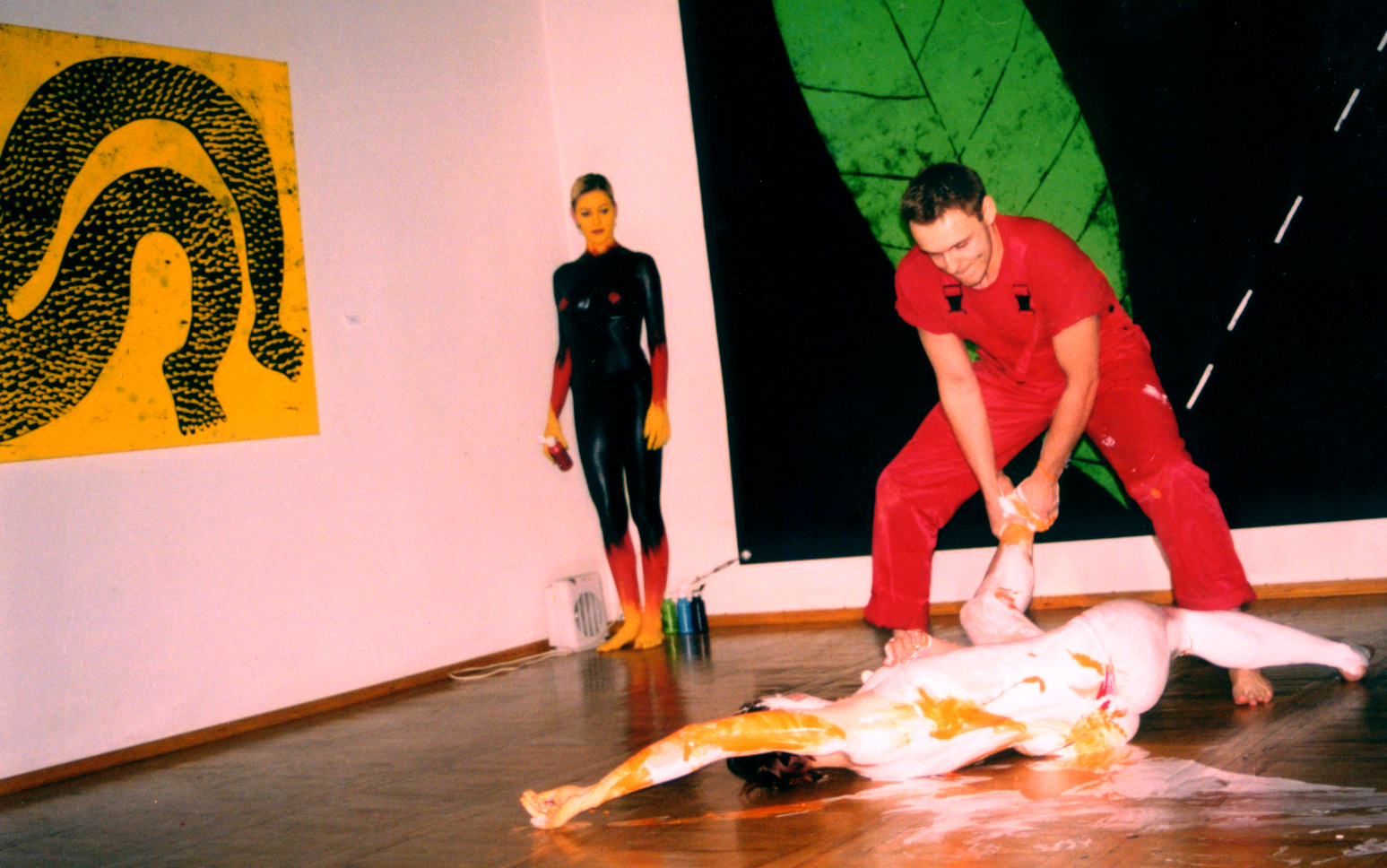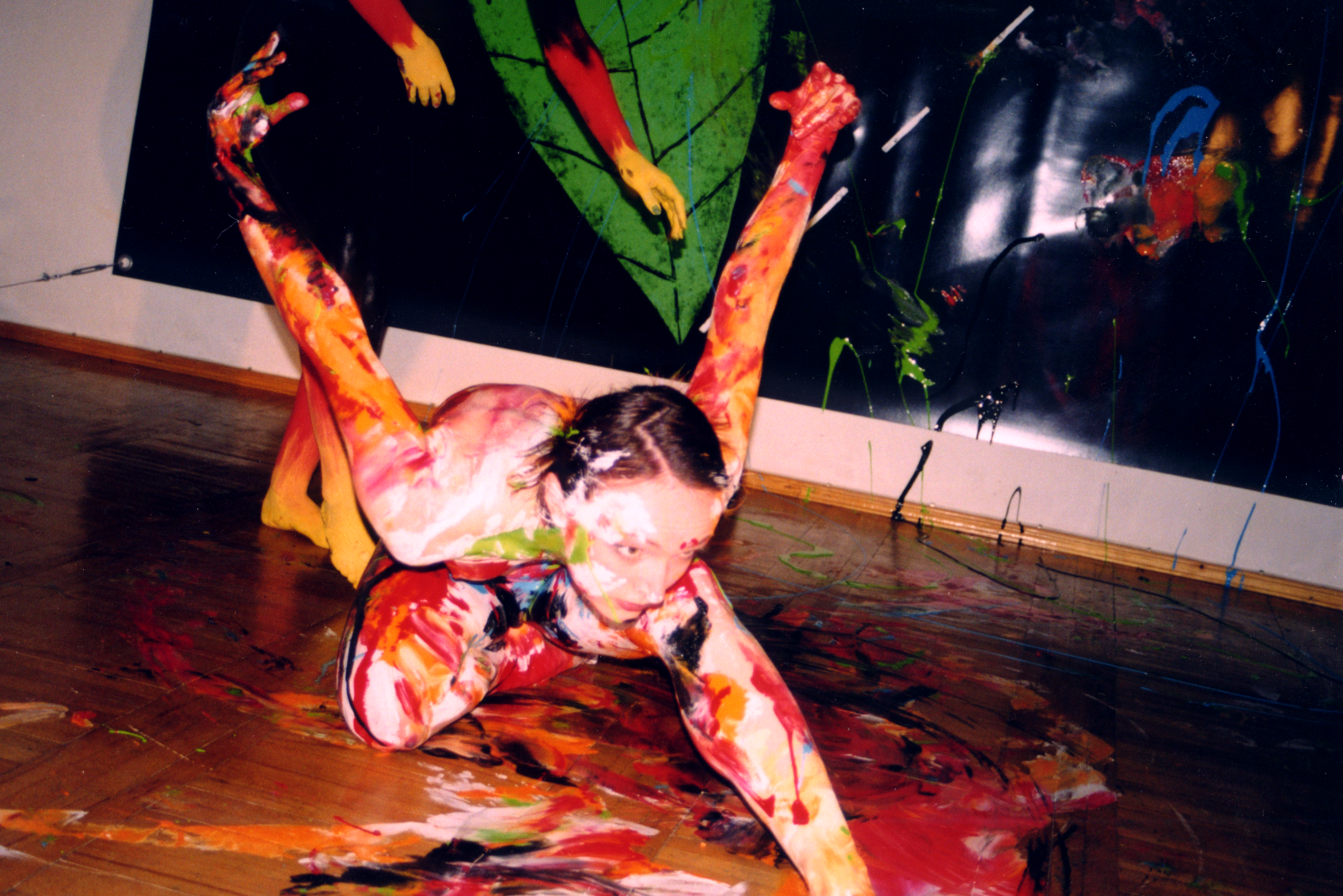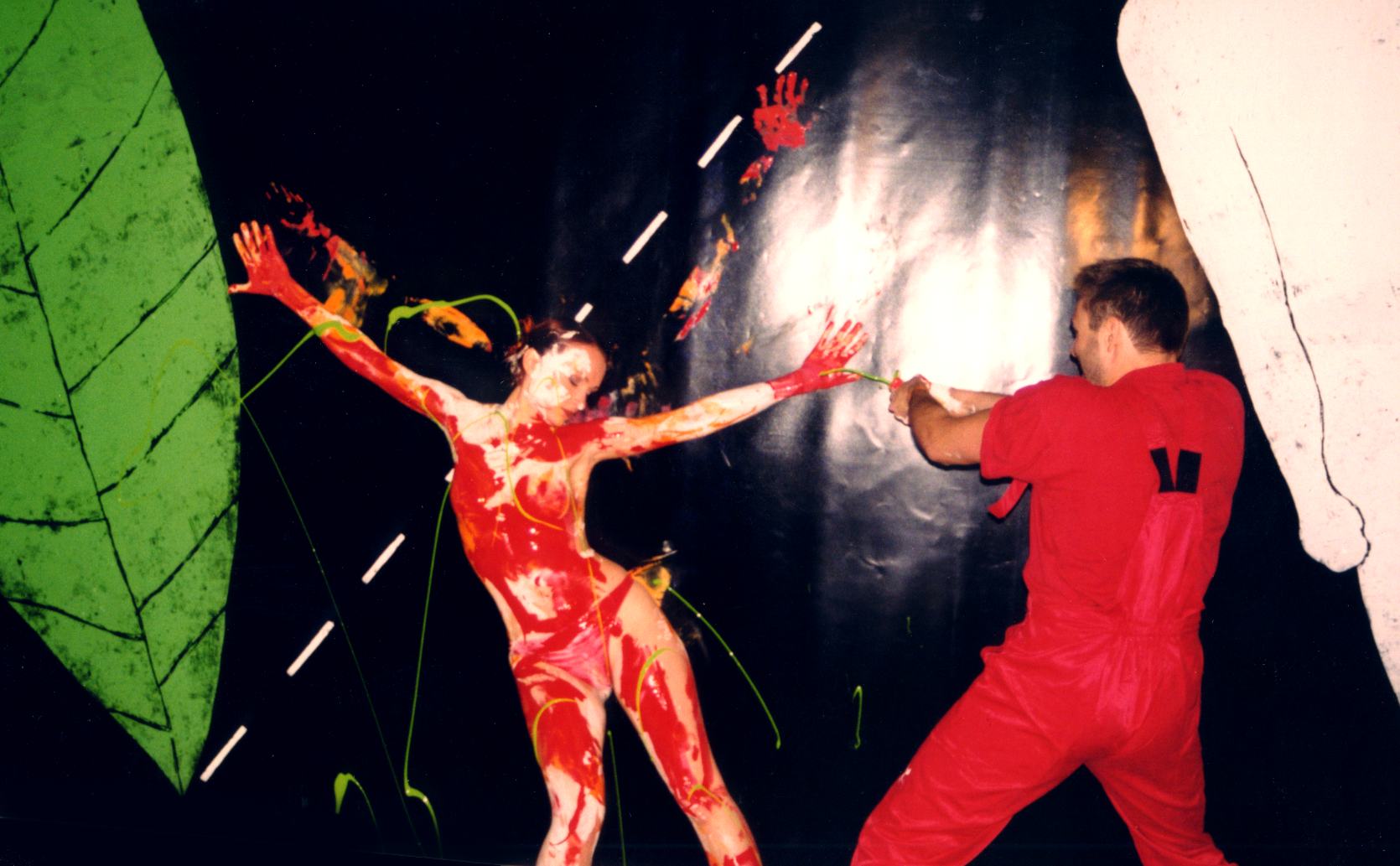
What is it KARMAN
KARMAN group foundries are Egmontas Bžeskas and Karina Krysko.
Karina Krysko 2002 graduated from Vilnius Conservatory of Dance, culture and choreography faculty. Since 2000 she is participating in international and local dance performances. She creating choreography for KARMAN dance performances and fashions shous.
Egmontas Bžeskas 1998 graduated from Vilnius Academy of Arts and finished Master’s Degree of Fine Art’s (Magister Artium). Since 1996 he is participating in international collective and personal exhibitions and creating art and dance performances together with KARMAN group.
KARMAN is a young movement group established in 2001. This group consist of five dancers and one actor. The other characters for the performances we
take from real live. They are artists, musicians, sportsman, salesmen from the shops, striping girls, DJ, homeless people and others. For us it is very important in the theatre stage to show a real life of the people witch we invite. We try to make connection between our group modern movements, and
people who make thinks go in every life.
The main line of our performances it is not exact paraphrase of history, but it is a sound, body forms, moving in our created esthetical space.We like it, when bodies move in different ways- slowly, quickly, or hysterically, even if is just one little muscle of the whole body that is alive. A moving body is already a dance; you just have to put it into a special shape. We love watching people moving in reality and composing dances of this movement. All every day life actions, such as nail hammering; boxing; striping; hair pulling; combing stroking- turn into the symbolic struggle with the gravity pull. A movement to as is a fusion of a shape and idea. When you are able to achieve certain harmony. There comes a movement, stylistically determined by your inner feelings each centimetres is important here; nothing should be missed carelessly.
“Karman” group foundries is Egmontas Bžeskas and Karina Krysko
About the STRUGGLE WITH GRAVITY PULL
THE PERFORMANCE STRUGGLE WITH GRAVITY PULL INVITES EVERYBODY TO PARTICIPATE IN ONE MAN’S ATTEMPTS TO FIGHT THE GRAVITY PULL…
At the same time we laugh at this man’s efforts and want to draw the audience’s attention to the fact that there are people do not even try fighting and burry themselves stuck in this mud forever.
The performance tell us the story about a human being; his or her fight for the physical, as well as spiritual existence. “Has a man really given a chance to struggle with the gravity pull?”- the creators ask in this show. I am interested in combining the contrasts in scenes, therefore, the performance is based on the principle of music video clip. The show is composed of actions, which are not in agreement with each other on any level—either visual or acoustic. The minimized model of the world is put on the plot, composed of short episodes, telling us the story of a human kind. Elements of horror, comedy and erotic; and bizarre characters such as Unrecognised soloist, Unstoppable Stripper, Gay Boxer, “Nicely Dancing Ballerina”, Hysterical Genius, the Sax-Player; Stone- Faced Businessmen with Stupid Smiles; Members of Religious Sects; People Crawling Like Worms on Wet Ground; Posh Jacketed Representatives of Evil; Criminal, Stabbing The Body of Water and Joker With Hurt Feeling, Desperately Building his house of Cards—they all live in this mysterious performance.
Main idea of the performance is never-ending Talent Contest; for that reason I am convinced that everybody will be able to recognize his or her self in this game.
STRUGGLE WITH GRAVITY PULL is like our mirror, which lets you get slightly scared; laugh at yourself and optimistically envision everything as sports
KARMAN TabulaRasa 2003
Tabula rasa, presented by an artist and director Egmontas Bžeskas together with a choreographer and dancer Karina Krysko, is a continuation of the performance which was delivered and very well received at the Off-beats festival last year. Music to this production is composed by Andrius Kauklys, a DJ and the leader of the Happyendless. His musical compositions are performed alive during the performance and serve as a résumé for its weird and funny visions. The stylistic direction of the production may be defined as a theatrical variety of a video.
This recent KARMAN production is filled with horror, weird visions and open eroticism. The authors advise that the audience should not take children to their performances. In addition, they are not recommended for people with a weak nervous system or extra-high moral standards either. KARMAN named themselves a reality theatre because the majority of the participants of their productions are real people, usually, not professional actors at all. They all do on the stage what they are good at in reality. The contact with the audience allows them to change the course of the production which adds unpredictable episodes to the action.
We are displaying life the way it is. We do not aim to hide anything or to cover it with veils of art. We are presenting sport, sex, wealth, perversions, madness and transvestites. We do not declare if it is right or wrong. As a reality theatre, we want to show it because it exists. Conclusions should be drawn by the audience. They should decide who the winner is: the good or the evil. This is real life transplanted onto the theatrical stage. Even the weirdest visions are the result of real human thinking mixed with clinical madness and sometimes based on real clinical records.
However, in this new KARMAN production there is also room for humour and for games with the audience. It makes the action unpredictable, the audience gets an impression that the course of events is out of control, and the feeling of safety is lost.
In some sense our audience may influence the course of our performances. We give our audience a chance to decide what they want and what they see. We are expecting as many different opinions as possible because in this way we can see that our production was really democratic, and that we did not put constraints on the imagination of our audience.
This tragically comic performance tells a story of an inhabitant of a “white quadrangle”. The closed space signifies the inner world of the protagonist which is split into two halves. One half of it is forced to submit to social norms, the other one plunges itself into odd visions and dreams. Gradually, the audience is also involved into the white quadrangle. The boundaries become blurred. The protagonist loses himself. What is real and what is illusionary here? Maybe it is just a bad dream or maybe it leads to the unknown…
Mr. X, the protagonist, engorges raw meat and evacuates because he understands that this is what the real human nature is. The boundaries of the white quadrangle stand for the brain of its weird inhabitant. All the visions that surround him are the result of the activity of separate parts of Mr. X’s brain. They take forms of parasites, bacteria, erotic scenes et al. Mr. X cannot escape from the space of the white quadrangle. He is absolutely convinced that this is his private space and he is its only inhabitant. However, this is not exactly so since his brain is full of inner parasites that are constantly damaging the white quadrangle. They can get in and out of it easily and leave their clear imprints there. The only effort to clean and save the white quadrangle is made by Mr. X’s soul, a white spirit, a supernatural being that is embodied by a mindful lady who never gives up.
Tabula rasa was produced co-operatively in Lithuania and Berlin. Its premiere was presented at the Off-beats 2 festival in Berlin. A very cosmopolitan cast was involved in its production: Lithuanians, Germans, and Brazilians.
